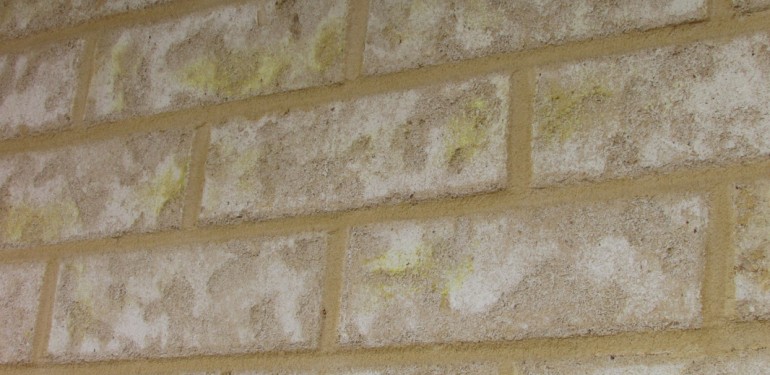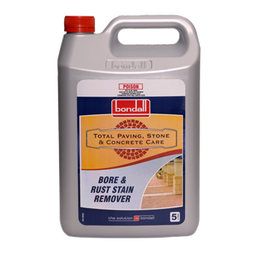
Yellow Brick Stains – What are They & How do I Remove Them?
Iron oxide staining or ‘acid burning’ to clay masonry is a yellow to brown rust-like stain that can also affect mortar. This blog looks at the most likely causes as well as how to rectify.
What causes iron oxide staining or acid burn?
Generally the main cause of iron oxide staining is the improper process of acid cleaning brickwork. A chemical reaction occurs between the iron oxides in the brick and the hydrochloric acid application. This reaction is particularly common on light coloured bricks, as a more diluted concentration is often recommended when preparing the hydrochloric acid cleaning solution. Other common mistakes made include not adequately wetting the wall down prior to cleaning, and not rinsing the solution after cleaning has been completed. For more information on the correct application of hydrochloric acid to clean bricks, please visit INSERT LINK.
Will iron oxide staining cause structural issues to my home?
Generally the presence of staining to masonry is an aesthetic blemish and will not affect the structural adequacy of the block. In unique circumstances such as the use of particularly porous masonry or a poor composition of mortar mix it is possible that hydrochloric acid can ‘eat away’ at the structural integrity of the material, although severe staining or fretting is usually easily identifiable prior to this becoming a structural issue.
It should also be noted that the identification of iron oxide staining may provide an explanation for other forms of damage, such as the corrosion of aluminium window frames. Aluminium and powder-coated finishes should be protected from exposure to any forms of acid, and good maintenance techniques should be adhered to.
How do I remove iron oxide stains?
The two most common forms of cleaning brickwork are high pressure cleaning and the use of hydrochloric acid. It is important that you can identify the type of staining at your property as both of the aforementioned methods of cleaning will be ineffective at removing iron oxide staining.
Removal techniques for iron oxide staining include:
Phosphoric Acid
- The application strength and duration will vary. As a guide, use a mixture of 1 part phosphoric acid to 6 parts water.
- Apply by brush or spray to the dry wall and allow to stand until the stain disappears, usually within 30 minutes but it can be up to 24 hours.
- More than one application may be required. Mortar containing an iron oxide colouring pigment will be lightened by this treatment.
To maintain a uniform appearance, treat an entire wall or keep the phosphoric acid clear of the mortar.
- Use a solution strength of 20 to 40 grams per litre of water, with the water being preferably hot.
- The method of application is the same as for the phosphoric acid treatment.
- More than one application may be required.
- Neutralise the oxalic acid by applying a solution of 15 grams of sodium bicarbonate per litre of water. Do not wash off. For this reason the use of oxalic acid may not be suitable in areas that may become in direct contact with aluminium such as window sills.
Proprietary chemicals may be purchased at home depot stores that are equally effective at removing iron oxide staining. Always ensure that you are purchasing a product specifically for the type of staining that you wish to remove, and carefully follow manufacturers recommendations.
If staining does not disappear after multiple treatments, a poultice technique may need to be applied. In essence this technique is the mixing of a paste that is applied over the affected area and left to dry, before brushing off, cleaning, and neutralising.
Adequate PPE should always be worn & due care should be taken when dealing with chemicals. Ensure that all other surfaces are not exposed to the treatment undertaken, as discolouration may occur.
At Cap-It-All Building Inspections our inspectors are well-versed with the vast spectrum of staining that may occur to masonry, and as such will be able to advise you on the required techniques to rectify these cosmetic issues.
Case Study
The picture at the top of this page depicts iron oxide staining. This was easily identified by the inspector as the staining was most evident at the window reveal (an area where hydrochloric acid cleaning is usually concentrated), & at the top of the external brickwork (an area protected from natural weathering that may have washed off the hydrochloric acid).

